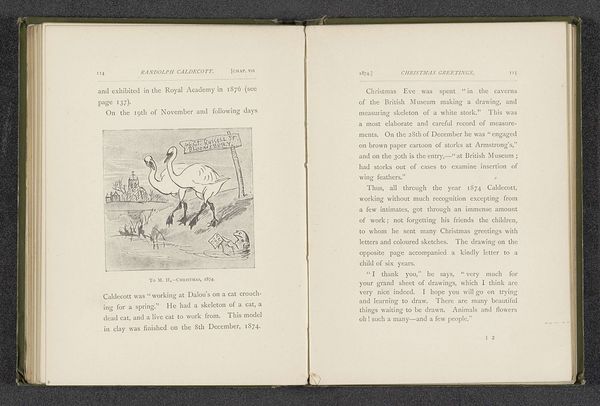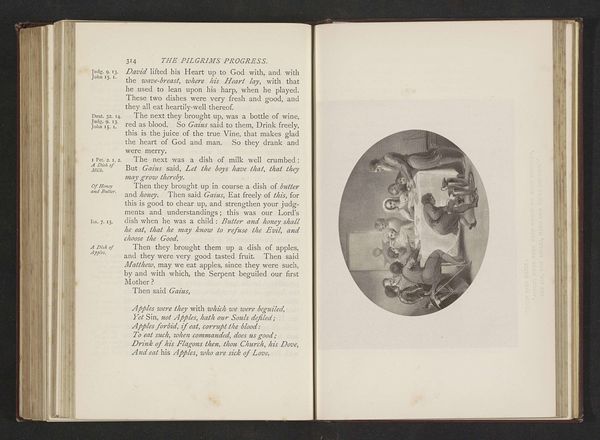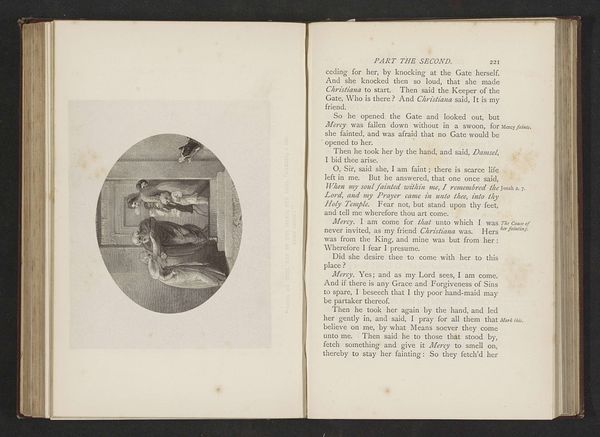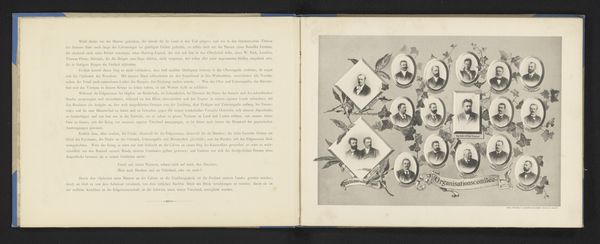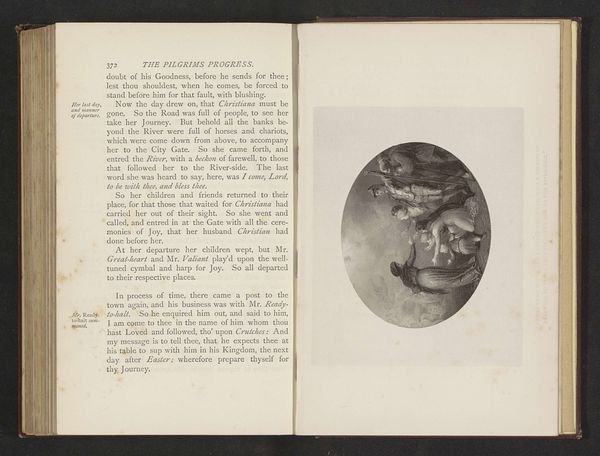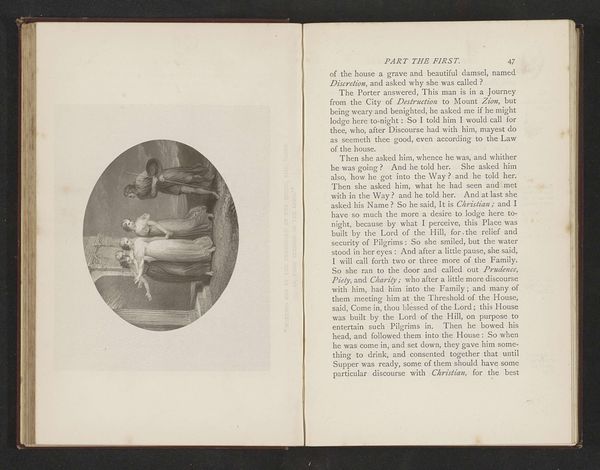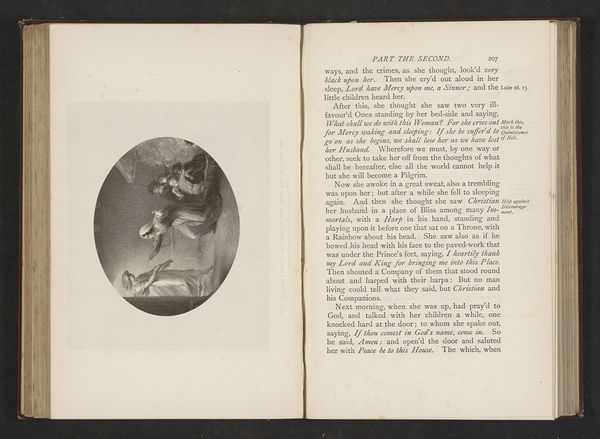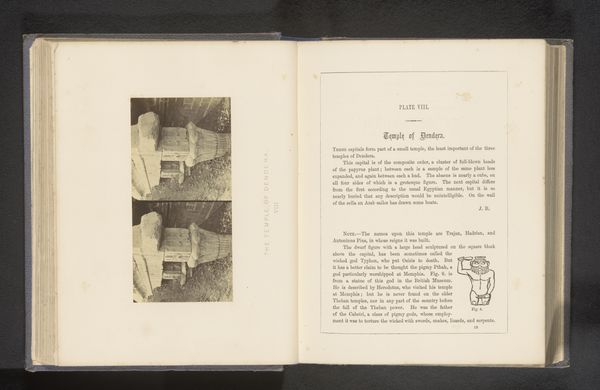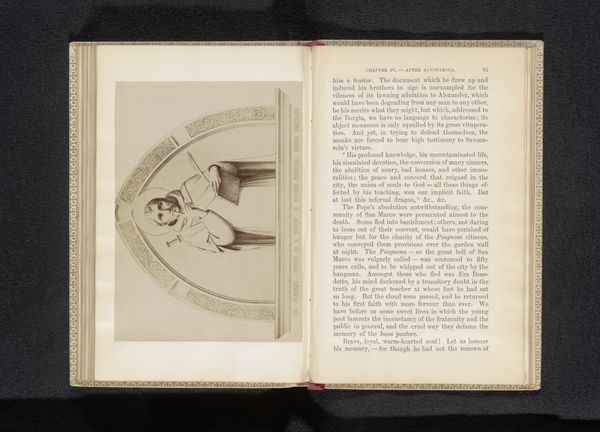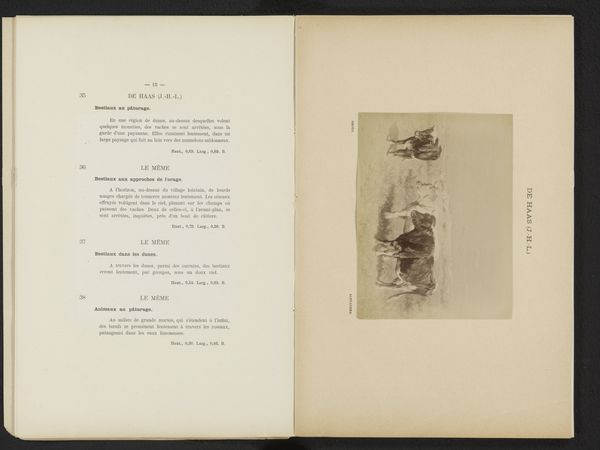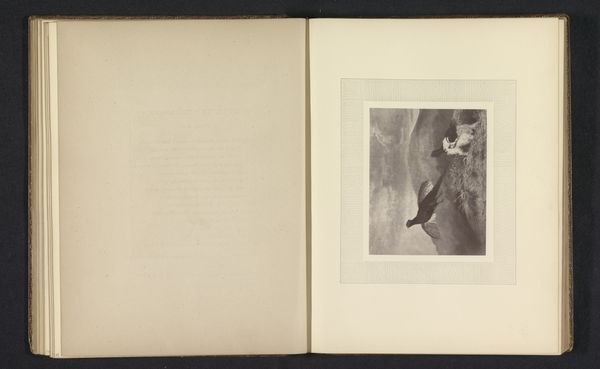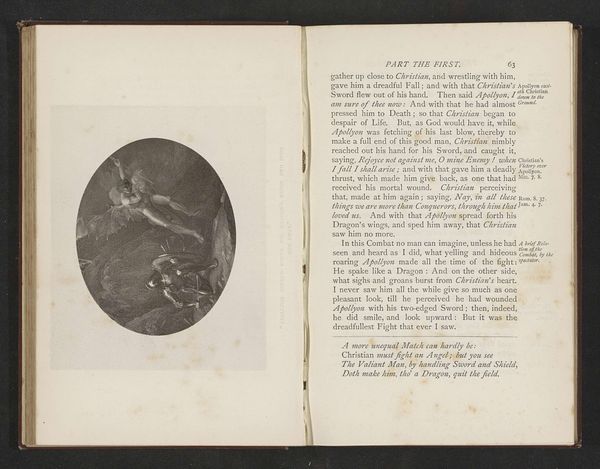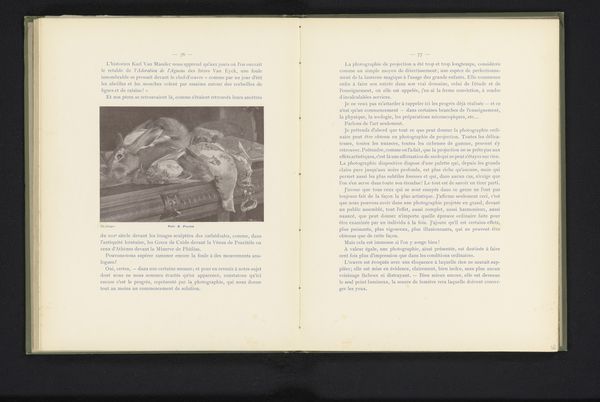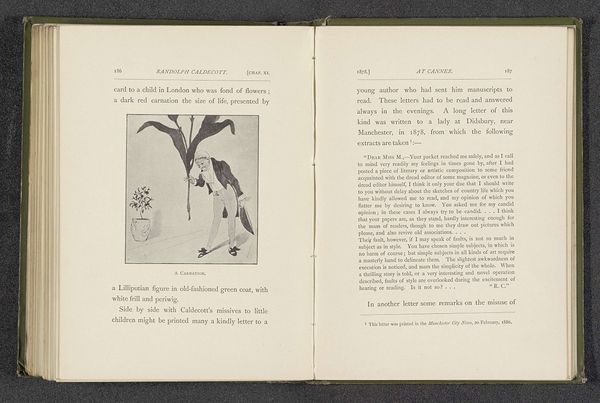
Tekstblad met winterkoning die ontsnapt als de uil in slaap valt 1892
0:00
0:00
drawing, paper, ink
#
drawing
#
art-nouveau
#
narrative-art
#
ink paper printed
#
paper
#
ink
#
symbolism
Dimensions: height 224 mm, width 281 mm, height 319 mm, width 408 mm
Copyright: Rijks Museum: Open Domain
Curator: This is Theo van Hoytema's "Tekstblad met winterkoning die ontsnapt als de uil in slaap valt," created in 1892. It's rendered in ink on paper. What strikes you about this work? Editor: It's like a page from a children's book, with those charming little illustrations and the handwritten text. It feels whimsical, almost like a fable, but the image of the owl also gives it a slightly darker, more serious tone. What do you see in this piece? Curator: Beyond the initial charm, I see a commentary on power dynamics, particularly through the lens of animal allegory, which was not uncommon during the Symbolist movement. Consider the owl, traditionally a symbol of wisdom, depicted as sleepy and neglectful. What social structures or systems might this sleepy owl represent? And who is the kleine ventje or little chap in that scenario? Editor: So, you’re saying it's not just a cute illustration but perhaps a commentary on those in power being complacent while others, like the winter wren, seize opportunities? Curator: Exactly. Think about the socio-political context of the late 19th century. There was burgeoning unrest, rising socialist movements challenging established norms. Could this be a reflection of that tension, of the "little guy" finding a way to escape the watch of authority? Notice also the Art Nouveau style - decorative, but often imbued with subversive undercurrents. How do you feel knowing its cultural and historical background? Editor: It definitely shifts my perspective. I thought it was simply a lighthearted scene, but now I see a possible layer of social critique, even a feminist perspective in subverting patriarchal authority. The winter wren outsmarts the powerful owl through cunning instead of force. Curator: Precisely. And that nuanced reading reveals how art, even seemingly simple illustrations, can engage in broader conversations about identity, power, and resistance. Editor: That's really fascinating. I’ll never look at illustrations the same way again! Curator: And that’s the point – to see how art acts as a mirror reflecting and refracting societal anxieties and aspirations.
Comments
No comments
Be the first to comment and join the conversation on the ultimate creative platform.
